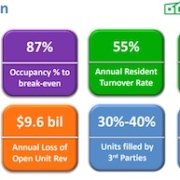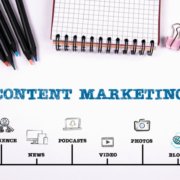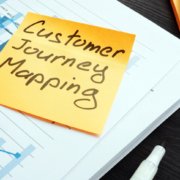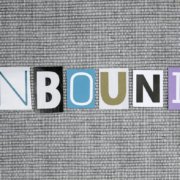The Power of Storytelling in Marketing: Use Real Images
You’ve probably heard about the power of storytelling in marketing. Resident photography and videos can be excellent ways to tell the “story” behind your brand. These images and stories can also help prospects overcome fears and stereotypes typically associated with senior living communities.
In our quest to better understand the benefits of telling stories in marketing materials, we interviewed Tom Sanders, founder of Senior Living Visuals. Tom does an excellent job of creating powerful stories through visuals. He’s created films and photo shoots seen by millions of prospects. Many of these images include residents who are veterans, artists, painters, centenarians, and long-married couples. Many have truly unique stories, such as working under John F. Kennedy or playing baseball with Jackie Robinson.
Below is our interview with Tom about the power of storytelling in marketing. Specifically, we talk about the importance of using real images.
SLS: Tell us about a compelling story that you brought to life for a senior living community.
TS: I made a three-minute film with MBK Senior Living on a painter who is going blind and has an optimistic outlook on life to keep discovering and evolving as an artist. The film titled “Lynn the Painter” was picked up by the positive news website Upworthy. To date, the film has received over a million views worldwide. Lynn chose to live at an MBK community up in northern California because it matched her personality.
SLS: What strategy or process should people follow to create a positive emotional response?
TS: In most cases, every story generally needs some sort of a story arc where there is a struggle. The “Hero’s Journey” by Joseph Conrad is a universal book that explains the struggle and overcoming of a challenge you want in every story (the book is not an easy read; you can watch this documentary on “The Hero’s Journey” here if you have limited time).
SLS: So once you’ve created these compelling themes, how do you integrate them into marketing strategies and tactics?
TS: You need to know which resident portraits are applicable to print, digital, direct mail, display ads, events, and on-site at the community. In most cases, if a photo series is photographed on a certain subject matter, such as couples who have been married for over fifty years, the photos can be used at the community level and all the way up to the corporate level for any kind of marketing.
A series shot on 80-year-old-plus athletes might only function for a calendar and the wellness/fitness section on a senior living community’s website. Films, in most cases, can live on the community’s main websites and social media platforms for two years. After two years, the wardrobe begins to look out dated and reflects poorly on your branding.
SLS: Is there any particular project that has touched you most personally?
TS: Yes, my ongoing veteran photo series with Belmont Village. Each community proudly displays a permanent exhibition of the veteran portraits of their residents. This resulted in my book from Random House, The Last Good War: The Faces and Voices of WWII.
SLS: We so often see the same stock photography used repetitively in digital and print campaigns. Most of the time, we see images that are completely unrealistic or silly, such as seniors taking rides in wheelbarrows. Do you have any thoughts on that?
TS: Please try hard not to buy stock photography and films. Your competitors are using the same stock imagery that your company is using. Photograph and create films on your residents for your marketing materials. This way, the stuff you use will be truly unique to your company, you can build a library of your own films and photos, and the marketing materials will match the real heart and soul of the characters that live within your communities.
More info on Senior Living Visuals and Tom Sanders: Senior Living Visuals was founded by Tom Sanders, a photographer, author, and filmmaker. Tom has been creating films and photography for the senior living industry nationwide for over 13 years. His book, The Last Good War: The Faces and Voices of WWII, was published with Random House in 2010. In addition, the book was named the non-fiction book of the year by Foreword Magazine.
Sanders traveled the country photographing and interviewing WWII veterans at retirement communities, launching him into the aging industry right out of college. Sanders has been interviewed on TV news over one hundred times. His short commercial films have received millions of views worldwide.











